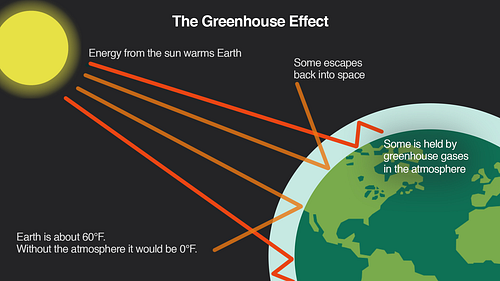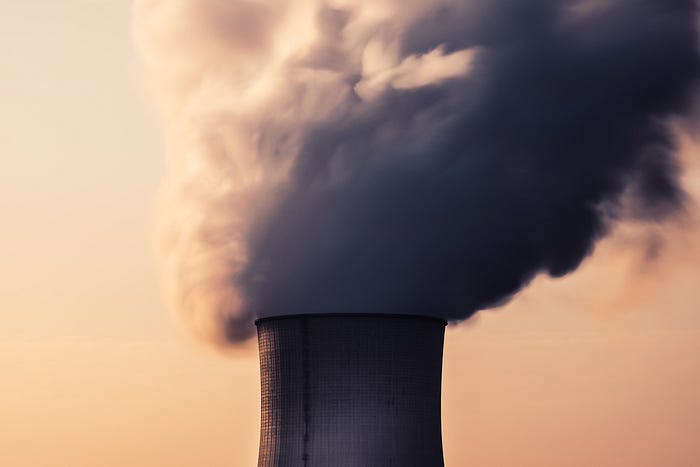Green Energy, Nuclear Energy, And How It Corresponds To Climate Change
Photo by Aditya Joshi on Unsplash
As humans are developing complex technologies to cope with our needs, our modern power source also needs to be improved upon to keep up with the increase in daily power consumption. A report by the International Energy Agency on Global Energy & CO2 states that the global electricity demand in 2018 has increased by 4% or about 900 TWh, growing twice as fast as the overall demand for energy. While renewable and nuclear energy is on high demand, but there is still a considerable increase in the usage of coal and gas power plants to meet the power demands. World Atlas posted an article that shows the fossil fuel dependency by country, and from their research, it can be concluded that a lot of countries (about 50 of them) have over 86% power dependency on fossil fuels. This is why in some nations, when a power consumption spike, it can cause the extreme usage of fossil fuels.
 2013 U.S. Greenhouse Gas Emission chart from Ameslab
2013 U.S. Greenhouse Gas Emission chart from Ameslab
Based on an article from Ameslab, fossil fuels are composed of hydrogen and carbon. Thus fossil fuels emit carbon dioxide when burned because the carbon combines with oxygen. Fossil fuels emit different amounts of carbon dioxide because fossil fuels have varying carbon compositions. For example, natural gas emits half as much of carbon dioxide of the carbon dioxide produced by coal. According to the pie chart above, carbon dioxide makes up most of the greenhouse gases in our atmosphere, thus the irresponsible usage of fossil fuel based power plants will damage society in the long term.

Illustration by Climate Central
An article by Climate Central explains the effects of greenhouse gases perfectly. Even though our atmosphere is transparent to visible light, there is a range of colors from red to violet that makes up natural sunlight. As energy from the sun warms the earth via sunlight, normally the energy will be reflected back into space from the earth’s surface, while some are retained by the earth’s atmosphere creating the greenhouse effect that warms the earth’s surface to habitable temperatures. An overdose of the greenhouse effect causes the earth surface temperatures to rise, interrupting the earth climate cycle causing what is now known as climate change.
Because of this phenomenon, renewable energy sources are in high demand in many countries around the world. The race to stop our ever changing climate has begun. As renewable energy is greatly looked upon as the future of humanity because it is safer for the environment and it doesn’t rely on fuel instead it relies on nature such as wind power, solar power, and hydroelectricity.
Let me play the devil’s advocate here, I personally feel renewable energy alone will not be able to sustain our biggest power needs, renewables are nice and all, but the way they generate power is a bit situational. Let me explain, wind power can only function if there is wind and solar power can only function if there is sunlight. Thus power generated by renewable energy sources such as windmills and solar panels are situational and there needs to be a workaround to this dilemma. One way to solve this problem is to store some of the energy produced so when these power plants cannot produce energy, there can still be backup power sources to be used by the people. But this fabricates another problem, batteries are extremely expensive, and unless in the near future humans come up with a more efficient way to store huge amounts of energy on lithium batteries, I do not think renewable will be as efficient as it should be.
Nuclear, on the other hand, looks very promising for the future. It generates good amounts of power with less pollution. Based on an article by world-nuclear.org over 50 countries around the world utilize nuclear power for medical, and industrial purposes. While there are about 30 countries with operational nuclear power plants. Many countries around the world are heavily reliant on the power of the atom. For example, out of the 20 nations in the G20 excluding Australia, Indonesia, Saudi Arabia, Turkey all receive power from or has a nuclear power plant. Even Turkey is planning to build two nuclear power plants to sustain their population.
On the environmental side of this subject, nuclear proves to be a bright alternative. An article posted on g20portal.com wrote that in the U.S. nuclear power has significantly reduced CO2 emissions. Approximately 590 million tons annually. Several European countries have also pushed for nuclear power to be part of the European climate solution.
In conclusion, I believe that nuclear power is an important aspect of the struggle for a clean and green power system, because of it’s high-reliabilityand low-carbon capabilities. I am not completely against renewables because I still see it as an innovative and self-sustaining solution. I just feel that renewables are so overrated and we need a reliable solution to balance the odds.
So, can nuclear power save worldwide power crisis induced climate change?

Photo by Thomas Millot on Unsplash


